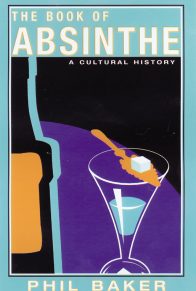Penis size and shape are hereditary, and penises are as similar on the whole as they are infinite in their variety. They are not muscles, and there’s no bone in any of them.
The penis is attached to the pelvic cavity at its root, or base. Its head, the big, smooth cap on the end, is called the glans, and the rim around the base of the glans is the corona. The shaft of the penis contains three columns of spongy erectile tissue, and is encased in a loose layer of skin. In uncircumcised men this skin also covers the glans. The piece of skin that keeps the glans covered is known as the foreskin, or prepuce, and it retracts as the penis becomes erect. Circumcised men have had the foreskin removed, so that the head of the penis is uncovered at all times. The slit in the head is the opening of the urethra, a slim tube that runs from the bladder through the body of the penis to the head.
The urethra carries both urine and semen to the outside world, but not simultaneously.
The penis rests on the scrotum, which contains two testicles, or balls. Both testosterone and sperm are manufactured in the testicles.
Penis and testicles grow to full size during puberty. From puberty onward, the sperm factory in the testicles maintains a constant production cycle. A healthy, fertile male makes several hundred million tiny sperm each day. His penis functions as a conveyor belt. Its erection is a sign he’s getting ready to discharge some of those sperm, sharing them perhaps with a fellow human and in any case clearing his own storage facility for further stockpiling.
ERECTIONS
No one knows why men have erections when they have them and not when they don’t. Clearly they happen in response to erotic stimulation, but this stimulation can be purely physical or purely inspired by the imagination and the senses other than touch, or some combination of the two. Ned Rorem, in his memoir, Knowing When to Stop, reports what he was told about the French poet and filmmaker Jean Cocteau, “that, as a parlor trick, [he] used to lie naked on his back, and surrounded by a cheering section, with no manipulation, no friction of any kind, would achieve ejaculation …”
Though men have erections when they’re sexually excited, they also have them when presumably they’re not. Teenage boys have erections when they least expect them. Fear can also cause erections. And a man can desire sex and be so tense, for whatever reason, that his erection doesn’t materialize. Or, especially when he gets older, he may be thwarted by physical problems.
One 70-year-old man told me he couldn’t count on his penis to get erections anymore. “In youth and middle-age having a penis can be a source of enthusiasm for the world and for expressing oneself to others,” he said. “I no longer always like having a penis.”
A sure sign of the high value we place on erections is the word we use to describe a man who’s unable to have or sustain an erection. We call him impotent, which means without power. Even though we now have a politically correct euphemism for impotence, erectile dysfunction, everyone knows exactly what that means.
Temporary impotence happens to every man sometimes, and it’s always a big embarrassment. The more a man worries about it, the more likely it is to happen again. If it begins to happen all the time the impotence is in all probability no longer temporary – and according to figures released when the first erection pill, Viagra, went on the market in April of 1998, some 30 million American men are in this category. Yet in 1997, for an example, only 2.6 million saw their doctors to try to do something about it – and of those only 628,000 were new patients.
In 1998 urologists became the nation’s busiest doctors, working day and night writing out Viagra prescriptions. But before the advent of Viagra – which is said to solve the problem for 60 to 80 percent of those men who take it–impotence was not the sort of thing men liked to acknowledge by talking about it. For that reason little attention was paid to it by the medical profession in spite of the fact that most doctors are men, and it wasn’t until the 1970s that the physiology of an erection was fully understood.
(Altogether, we people are awfully slow about understanding our bodies. Homo sapiens were a fully developed species, having sex with each other for some 100,000 years, before we figured out where babies came from. Until the Neolithic period, around 9000 BC, no one knew men had anything to do with conception. As soon as men realized what their role must be, presumably from studying animals, they began to lord it over women.)
PHYSIOLOGY OF AN ERECTION
When a man is sexually excited, the chemicals he secretes allow extra blood to be pumped into the erectile tissue of his penis. At the same time the erection itself presses on the veins, reducing outflow. An erect penis is a penis engorged with blood. Which is why the comic Robin Williams once said, “God gave us all a penis and a brain, but only enough blood to run ONE AT A TIME.”
Penises grow erect from base to head. One man described the feeling to me – “There’s a faint warmth and sense of well-being as if the sun has just moved over and covered you.” The angle of erection varies from man to man but in general the younger a man is, the more his erections point up. As a man gets older he takes longer to reach a full erection and he may need direct stimulation of his penis.
During sex a man’s testicles also increase in size and in most men at a certain point they elevate, pressing up against the pelvis. This elevation means ejaculation is near.
Ejaculation happens in two stages. Semen is formed during the first stage, when rhythmic contractions propel sperm from the testicles into the urethra to mix with seminal fluid from the seminal vesicles and the prostate. A man who experiences these contractions may say, “I’m coming”; he feels he’s on the verge of orgasm, and at the point of no return.
During the second stage of ejaculation, contractions of the urethra, the prostate and the pelvic muscles propel the semen out the opening of the urethra. About a teaspoonful, containing 100 to 600 million sperm, is ejaculated at one time.
Here in the West we assume that orgasm, the intensely pleasurable feeling that accompanies ejaculation, can only occur during ejaculation – but this is not the case. Ejaculation is possible without orgasm (boys do it when they have wet dreams), and orgasm is possible without ejaculation. According to Chinese and Indian philosophies, orgasm without ejaculation is the path to ecstasy and superior health.
Orgasm can feel localized in the penis and testicles, or it can be more of a whole body experience. In the Hite Report on Male Sexuality one man says the sensation travels “down the back of my legs to the knees, up around my arms into my deep insides. The penis is only the focus for all this, the trigger.” Another says, “I feel like my cock has roots that extend down the backs of my legs, and coming draws juice from clear down there.”
After ejaculation the erection subsides, either at once or gradually, and for a short time a man’s penis and balls may be very tender.
If a man becomes highly excited and doesn’t ejaculate, his erection takes longer to go away and he may feel a heaviness and discomfort in his testicles. However, this condition, known as “blue balls,” is not at all as painful as teenage boys, trying to seduce teenage girls, like to claim it is.
THINKING WITH YOUR DICK
According to Darwinians – who study physiology and behavior to find evidence of a species’ reproductive strategies — humans are designed to be part monogamous, part promiscuous: the war between the sexes is more or less built into our biology. Men are nature’s vehicles of sperm distribution – and they amass power in order to obtain sexual access for themselves. Sultans with harems, rich men with wives and mistresses, are merely following a biological imperative to reproduce. But women, the ones who have the babies, need to be choosier about their mates — they demand fidelity so that their young will be well fed and taken care of.
One gay man described to me what “thinking with your dick” means. “When you’re stimulated, you switch into a different mode, and your dick takes over. It’s a little like a horse that gets the bit in his mouth and runs. I’m talking about a completely physiological kind of thing. That’s why male/male sexuality is so combustible–you’ve got two combustible elements. There’s a lot of sex in semi-public places like men’s rooms and bars. They’re there, they feel like it and they do it.”
If this theory is correct then women, with our insistence on decorum, are the only obstacle standing between current courtship practices and a continuous, semi-public, erotic free-for-all.
©1999 by Maggie Paley. Reprinted with permission from Grove Atlantic, Inc. All rights reserved.













